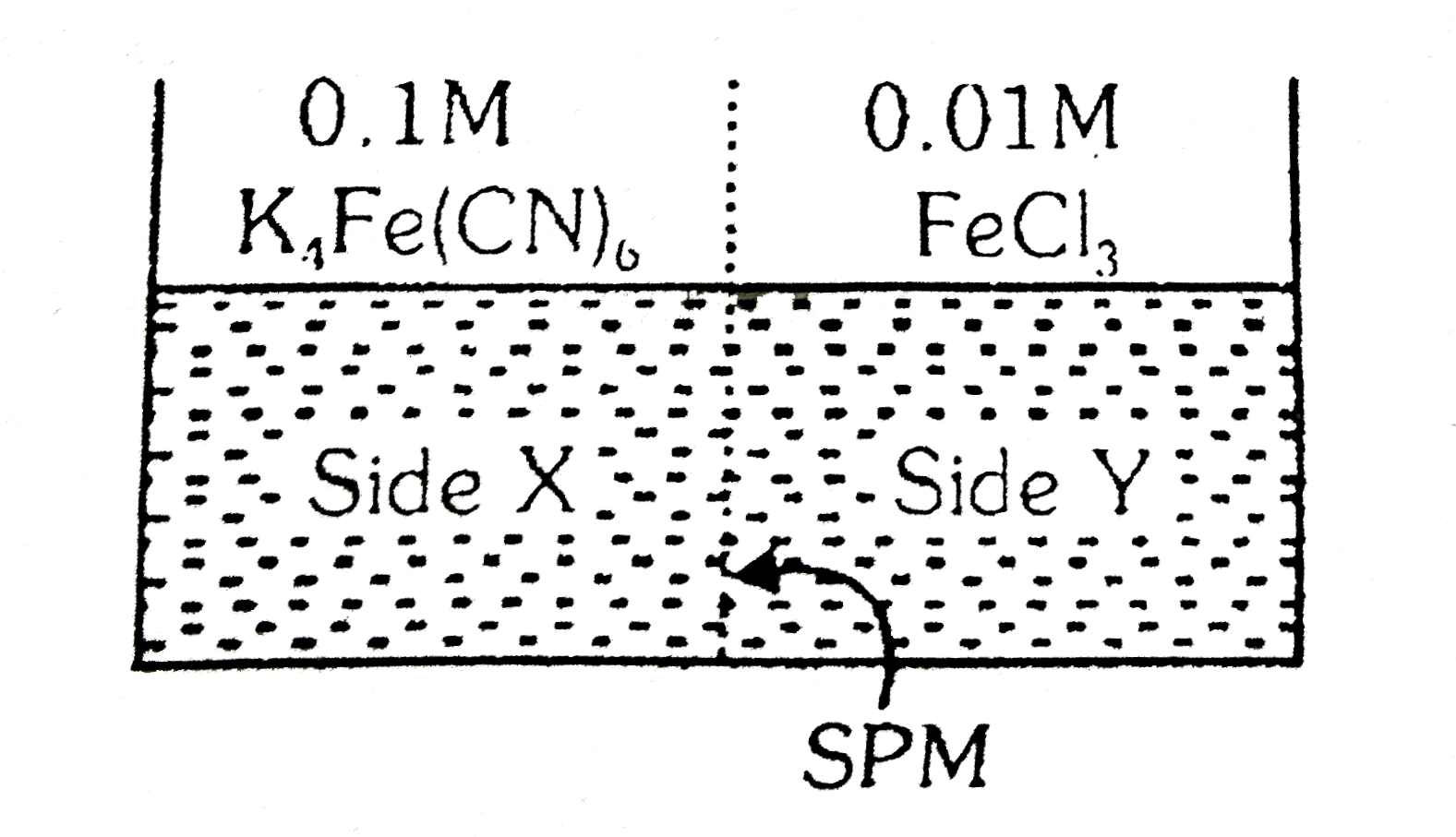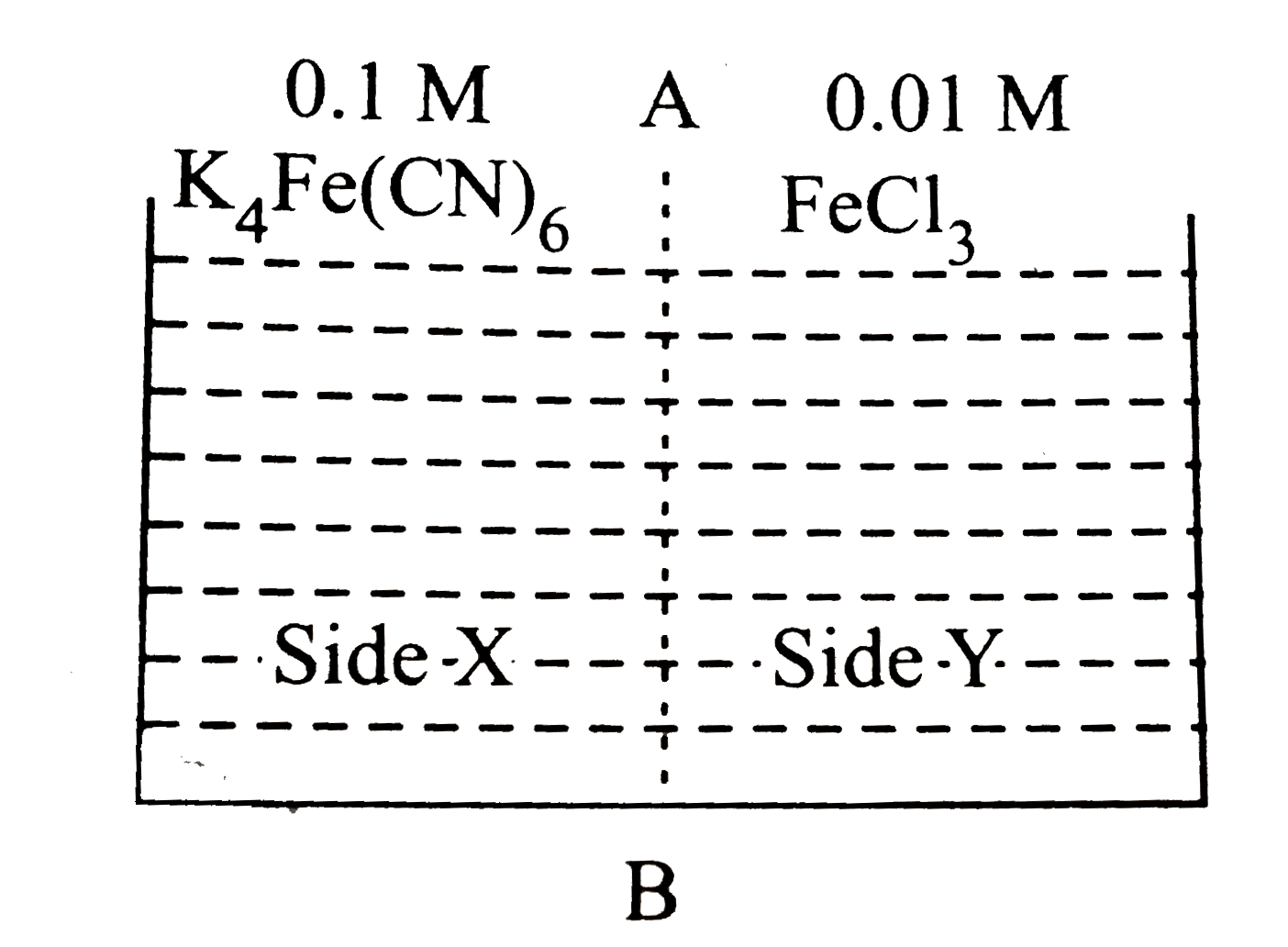Two solution (A) containing FeCl3(aq.) and separated by semipermeable membrane sa shown below. If FeCl3 solution on reaction with K4[Fe(CN)6] in aqueous solution gives blue colour of Fe4[Fe(CN)6], the blue colour will be noticed in:
![Two solution (A) containing FeCl(3(aq.)) and separated by semipermeable membrane sa shown below. If FeCl(3) solution on reaction with K(4)[Fe(CN)(6)] in aqueous solution gives blue colour of Fe(4)[Fe(CN)(6)], the blue colour will be noticed in:](https://d10lpgp6xz60nq.cloudfront.net/physics_images/DPB_PHY_CHM_IX_C07_E01_069_Q01.png)
(a) Blue colour formation in side A
(b) Blue colour formation in side B
( c) Blue colour formation in both sides
(d) No blue colour formation in either side
The correct Answer is:D
In osmosis only solvent molecules (and not of solte) move from dilute to concentration solution.
Topper's Solved these Questions
- BOOK - P BAHADURCHAPTER - DILUTE SOLUTION AND COLLIGATIVE PROPERTIESEXERCISE - Exercise 3B Objectice Problems1videos
DILUTE SOLUTION AND COLLIGATIVE PROPERTIES
- BOOK - P BAHADURCHAPTER - DILUTE SOLUTION AND COLLIGATIVE PROPERTIESEXERCISE - Exercise 9 Advanced Numerical12videos
DILUTE SOLUTION AND COLLIGATIVE PROPERTIES
- BOOK - P BAHADURCHAPTER - CHEMICAL KINETICSEXERCISE - Exercise 913videos
CHEMICAL KINETICS
- BOOK - P BAHADURCHAPTER - ELECTROCHEMISTRYEXERCISE - Exercise (9) ADVANCED NUMERICAL PROBLEMS36videos
ELECTROCHEMISTRY
Similar Questions
Knowledge Check
- Question 1 - Select One
Two solution (A)containingFecl3(aq)and(B) semipermeable membrance as shown below.If FeCl3on reaction with K4[Fe(CN)6],produces blue colour of Fe4[Fe(CN)6], the clue colour will be noticed in :
∣∣∣(A)(B)FeCl3K4[Fe(CN)6]∣∣∣A(A)B(B)Cin Both (A)and(B)Dneither in (A)nor in(B) - Question 2 - Select One
Addition of K4[Fe(CN)6] solution to FeCl3 solution gives
AFerro-ferrocyanideBFerro-ferricyanideCFerri-ferrocyanideDFerri-ferricyanide - Question 3 - Select One
The solution of K4[Fe(CN)6] in water will
Agive a test of K+Bgive a test of Fe2+Cgive a test of CN−Dgive a test of [Fe(CN)6]4−
FeCI3 on reaction with K4[Fe(CN)6] in aqueous solution gives blue colour.

These are separated by a semipermeable membrane AB as shown. Due to osmosis there is:View SolutionThe total number of ions furshied by K4[Fe(CN)6] in solution is
View SolutionThe total number of ions furnished by K4[Fe(CN)6] in solution is
View SolutionFeCl3 on reaction with K4[Fe(CN)6] in aqueous solution gives blue colour. These are separated by a semi-permeable membrane AB as shown. Due to osmosis, there is
 View Solution
View SolutionIn K4[Fe(CN)6],Fe is in the form of
View Solution

